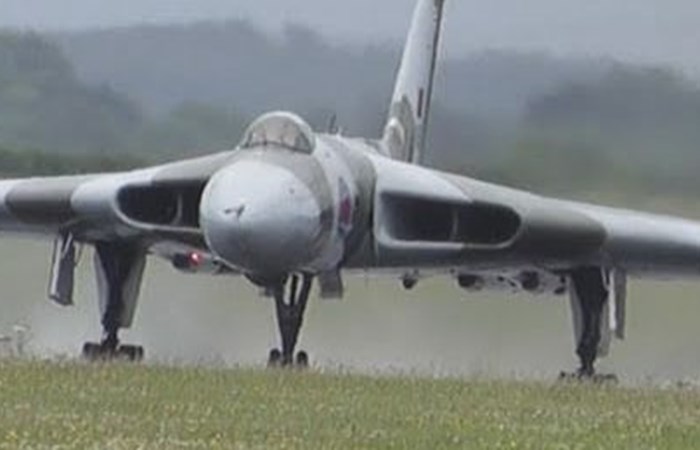Vulcan flying life extension to go ahead NEWS

The world's last flying Avro Vulcan, one of the UK's most popular heritage aircraft, is to receive a vital airframe modification that will help to keep her airworthy until the end of 2015.
It had been feared that Vulcan XH558 might have to stop flying at the end of this year but, following extensive research by the charity that operates the aircraft, the Vulcan to the Sky Trust engineering team now believes they can solve the series of complex technical challenges that could have grounded her.
'If everything goes to plan, we should be able to release sufficient additional flying hours for XH558 to complete full display seasons in both 2014 and 2015, in addition to this year's spectacular season which is just about to start,' says Trust chief executive, Dr Robert Pleming. 'There are still many gateways to pass through, but we are sufficiently confident to begin the vital fundraising that will make this exciting extension to XH558's flying life possible.'
There are three elements to the engineering programme, which the charity has called Operation 2015. 'The most technically challenging is a vital modification to the leading edges of the wings required to increase the fatigue life of the airframe,' explains engineering director Andrew Edmondson. 'The second element, which is less technically complex but in some ways even more difficult to solve, is to ensure that we have sufficient stocks of all the system components needed for the additional two flying years.' The final item is to complete the 2013-14 Winter Service, including the rectification of any technical issues resulting from the 2013 flying season.
Wing Modification to proceed
The wing strengthening will be carried out to Modification 2221, which was developed by Avro while the Vulcans were in service. It's a high-precision operation made more difficult by none of the original manufacturing tools and key drawings surviving. Phase 1 of the Modification therefore called on heritage aircraft specialists at Cranfield Aerospace (who also support the UK's last flying Avro Lancaster) to 'reverse engineer' the critical components.
Using data from a precision three dimensional scanning system, combined with research into the original wing design, the Cranfield team created a detailed computer model of the relevant wing sections. Following rigorous stress analysis, this was used to study the feasibility of the complex operation, which requires panels approximately two metres square to be precisely shaped in three dimensions so they fit each wing leading edge perfectly. 'The success of Phase 1 has shown that Modification 2221, one of the most important elements of Operation 2015, is feasible,' says Edmondson.
In parallel with this research, Edmondson and his team discussed component availability with key suppliers. 'This is the real limiting factor,' he says. 'We concluded that by the end of the 2015 flying season, we will have almost exhausted the available engine life and will be critically short of other components, several of which are either prohibitively expensive to remanufacture or simply can never be made again because the drawings no longer exist.'
The next step in Operation 2015 is to design and construct the manufacturing former for the wing modification. This should be completed during the summer. As soon as the aircraft lands following her final display of the year, the engineering team will begin the Winter Service while the high-precision panels are manufactured. The final phase of the Wing Modification will be to fit the new panels early in 2014. Following further testing, XH558 will be ready to take off for another spectacular season of displays across the country.
All flying life targets beaten
Dr Pleming says that by the end of 2015, the aircraft will have flown for around 80 hours more than was anticipated during the award winning restoration in 2007. 'We will have beaten all our targets by a significant margin,' he says proudly. 'XH558 is now enjoyed by around three million people every year 50% more than two years ago including children and young people who are inspired to learn more about engineering and aviation, hopefully to help fill the UK's desperate technology skills gaps. We have packed tours of adults and young people at the hangar at Robin Hood Doncaster Sheffield Airport and also support engineering training for local businesses.''When XH558 does finally touch-down for the last time,' he concludes, 'it is hoped that she will form the heart of a new type of engineering, education and experience centre so that she can continue to inspire new generations.'
Rewards for supporting Operation 2015
'We cannot start the engineering work without reasonable confidence that we will be able to finish and return her to the air,' highlights commercial director Michael Trotter. 'At the end of October, we will decide whether we have enough funding to continue Operation 2015 or if, sadly, XH558 should be prepared for her final flight.'
To help make that decision, XH558's supporters are being asked to pledge donations to Operation 2015 now. If the target of £400,000 is met, the charity will collect the pledged amounts early in November. To thank those making two additional flying years possible, redeemed pledges will be rewarded with a wide range of incentives, from badges and collector's certificates to names on a wall of honour and special VIP events at XH558's hangar. More details are available at www.vulcantothesky.org where readers can also find out where to see XH558 fly this year and sign-up for the latest Vulcan news. There is also a popular Facebook community, Vulcan XH558 and a Twitter feed @XH558
#u-TbaQo6nMIng-u#

 Popular
Popular Recent
Recent Comments
Comments

















